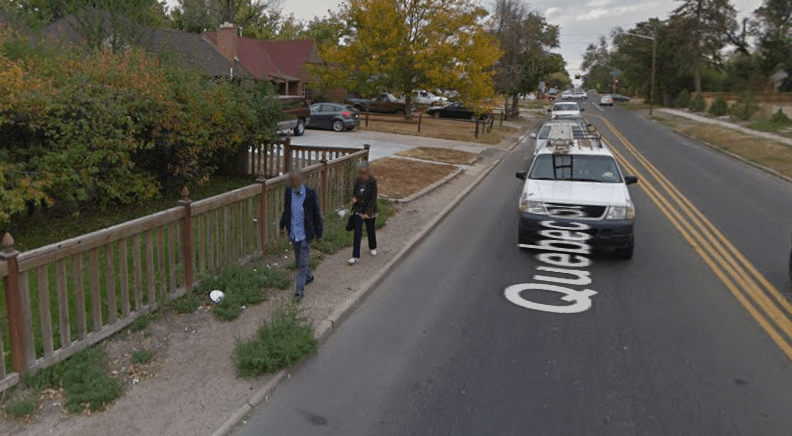Bus Lanes Now on the Table for Quebec Street
The Hancock administration can improve transit and walkability when it widens of Quebec Street — or it can repeat the transportation planning mistakes of the 1960s.

Until this week, it looked like bus lanes weren’t in the cards for the city’s plan to widen Quebec Street from two lanes to four lanes between 13th and 26th avenues, but Denver Public Works will consider them after residents, advocates, and City Councilwoman Mary Beth Susman pushed for a more transit-focused project.
DPW is embarking on a federally mandated study of the project’s environmental impact, so “now is the time” to study the incorporation of transit lanes, said Nancy Kuhn, a DPW spokesperson.
The impetus for the Quebec Street widening, first pitched in the mid-1990s, has always been to relieve car congestion. Adding car lanes may provide short-term relief, but before long, they usually lead people to drive more, pumping more motor vehicle trips through city streets.
Spending scarce resources to add car capacity flies in the face of the Hancock administration’s stated goals: to move more people by transit, walking, and biking while weening the city off car dependence.
“I’m not a person who likes widening roads, because I know about induced demand,” Susman said at a public meeting in Northeast Park Hill on Wednesday. “And some of the leadership at Public Works said, ‘Yes, but if we make more lanes it gives us an opportunity for transit.’ What I’d like to do is ask for a pony when you want a kitty. We could talk about [24/7] dedicated transit lanes, but if not, perhaps lanes that are reserved for rush hour.”
If Mayor Michael Hancock and City Council members want to live up to their own rhetoric, bus lanes and a walkable pedestrian environment have to be a priority, not an afterthought. This section of Quebec is missing sidewalks, forcing transit riders to trudge through dirt, mud, gravel and shrubs.
Quebec has been identified as a potential high-capacity transit street by the city’s Denver Moves plan. Current service only comes twice an hour but still draws more than 2,600 passengers a day. With more frequent service, a better pedestrian environment, plus the speed and reliability provided by dedicated lanes — not to mention all the new development slated for this area — many more people would opt for the bus on Quebec.
Prioritizing buses and walking on Quebec Street could turn into an important link in Denver’s local transit network, connecting to Colfax bus rapid transit. But without bus lanes, DPW will basically repeat the mistakes of 1960s-era transportation planning.
“It can’t just be about widening to accommodate cars, it needs to be about widening to accommodate mass transit,” said Geoff Horsfall, a Stapleton resident who attended Wednesday’s meeting. “They were noncommittal about a bus option, but they were not explicit about it either. I would like to see mass transit being made a priority.”
Members of the project team will meet with RTD next week to start modeling the possibilities, a consultant said. The environmental review is a long process that won’t conclude until the end of 2019, at which point DPW will have a final design. In the meantime, you can weigh in by taking this survey on the project, or email QuebecCorridor@denvergov.org.


